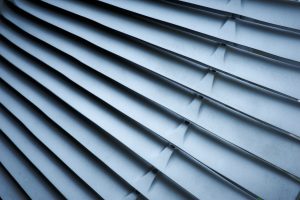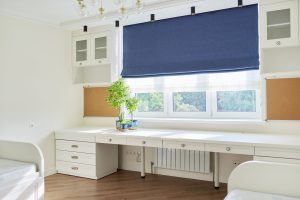Just as a tree provides a canopy of protection for the delicate plants beneath, an awning serves as a shield for your home or business, offering respite from the harsh elements. You’ve likely seen them stretched above windows, doors, or patios, their surfaces sometimes plain, sometimes emblazoned with names or logos. They’re not merely decorative; these structures are both a nod to a building’s aesthetic and a functional asset to its architecture.
As you consider the subtle interplay of form and function that awnings represent, you might wonder about their origins, the materials that afford them durability, and the technology that has evolved to extend their utility. In the following sections, you’ll uncover the layers of history and innovation that have transformed the humble awning from a simple canvas to a sophisticated piece of engineering.
Yet, as you stand on the threshold of this exploration, ask yourself how much you really know about the awning’s role in contemporary design and sustainability.
Key Takeaways
– Awnings are protective structures made of fabric or metal that provide shade and shelter.
– They have evolved from simple coverings to sophisticated architectural elements.
– There are different types of awnings, including retractable and stationary ones, with various materials and motorised options.
– Awnings offer benefits such as weather protection, energy efficiency, and the ability to transform outdoor spaces.
Defining the Awning
An awning is a protective structure typically made of fabric or metal that extends over a window, door, or area of a building to provide shade and shelter from the weather. When you’re selecting an awning, you’ll find that awning materials vary in durability, aesthetics, and functionality. Fabrics often consist of canvas, polyester, or acrylic-coated materials that are water-resistant and offer a wide range of colours and patterns. Metals, such as aluminium or steel, are durable options that withstand harsh weather conditions but may offer fewer design choices.
Staying abreast of design trends, you’ll notice modern awnings blend seamlessly with architectural styles, ranging from traditional to contemporary. Current trends favour clean lines, minimalistic patterns, and neutral colours that complement the building’s facade while also enhancing its energy efficiency. Retractable awnings are particularly popular, offering the flexibility to adjust exposure to the elements with the touch of a button.
In terms of technical specifications, you should consider the awning’s angle, which affects how much sun or rain it can deflect. The mounting structure must be robust to support the awning without risking damage to the building. Remember, the right combination of material and design can significantly elevate your building’s functionality and curb appeal.
History and Evolution
As you consider the contemporary features of awnings, it’s fascinating to look back at how these structures have evolved over time from simple protective coverings to sophisticated architectural elements. Ancient shelters bear little resemblance to today’s iterations. Historically, awnings were rudimentary constructions of woven mats and wood, providing shade and shelter in civilizations like Egypt and Rome. The Colosseum, for instance, featured a retractable awning system known as the velarium, showcasing an early understanding of the need for adaptable sun protection.
Through the centuries, the design and function of awnings have undergone significant transformations. In the 19th century, with the industrial revolution, awnings began to appear on the facades of shops and urban homes, using canvas as the primary material. They served not only as protection from the elements but also as a form of advertisement and aesthetic enhancement.
Today, awnings blend form and function using modern materials like acrylic, polyester, and aluminium. These materials offer superior durability, weather resistance, and ease of maintenance. Moreover, advancements in mechanical systems allow for retractable designs, integrating sensors and motors for automated extension and retraction. This evolution reflects the ongoing innovation in building technologies, meeting the demands for both utility and style in contemporary architecture.
Types of Awnings
Exploring the different types of awnings, you’ll find a variety of designs each tailored to specific needs and architectural styles. Retractable awnings are a popular choice, offering flexibility with their ability to extend and retract, thereby adapting to various weather conditions. Stationary awnings, on the other hand, are permanently affixed structures providing constant shade and protection.
When considering awning materials, you’re looking at options like aluminium, which is durable and low maintenance, and fabric, which offers a broad range of colour trends and patterns. The latest fabrics are also treated to resist weather, UV radiation, and mildew, extending their lifespan and preserving their look.
Motorised awnings represent another category; these integrate technology for ease of use, often operated by remote control or smart home systems. This convenience comes with a higher price tag, but for many, the benefits outweigh the costs.
Solar shades are a specific type of awning designed to block UV rays while still allowing for visibility. These can be crucial for protecting your indoor furnishings without sacrificing your view.
Lastly, window awnings, door awnings, and patio awnings are classified based on their installation location, each serving a distinct purpose from enhancing curb appeal to expanding outdoor living spaces. With these considerations in mind, you’re well-equipped to select the awning that best suits your needs.
Benefits and Uses
Understanding the various types of awnings equips you to appreciate the numerous benefits and practical applications they offer in residential and commercial settings. Whether you’re considering an awning for your home patio or your business’s outdoor space, you’ll find that they’re not just about enhancing space aesthetics; they also serve a multitude of functional purposes.
Here’s how awnings can significantly benefit you:
- **Weather Protection**: Awnings provide a shield against the elements, including harmful UV rays, rain, and snow, allowing you to enjoy outdoor spaces without the worry of weather damage or discomfort.
- **Energy Efficiency**: By blocking direct sunlight, awnings can reduce indoor temperatures and cut down on cooling costs, making them an eco-friendly addition to energy management strategies.
- **Space Utilisation**: With awnings, underused outdoor areas can be transformed into comfortable extensions of your living or working space, effectively increasing the usable square footage.
- **Brand Visibility**: For businesses, customised awnings can act as visual marketing tools, showcasing logos and messages which help in enhancing brand presence and attracting potential customers.
Incorporating an awning is more than just an aesthetic upgrade; it’s an investment in comfort, energy conservation, and functional space management, all while maintaining the integrity of your property’s design.
Installation and Maintenance
Proper installation and regular maintenance are crucial for maximising the longevity and effectiveness of your awning. When you’re having an awning installed, the installation costs will vary depending on the size, material, and complexity of the design. It’s essential to hire a skilled installer who can ensure the awning is securely attached to your home or business, and that it operates smoothly.
An effective maintenance schedule includes routinely inspecting the awning fabric for signs of wear, such as tears or fading, and checking the frame for any damage or corrosion. You’ll need to clean your awning periodically to prevent the buildup of dirt and debris, which can degrade the material over time.
In areas with harsh weather conditions, additional care may be needed to preserve your awning’s functionality. For instance, retractable awnings should be closed during high winds or heavy snowfall to prevent damage.
Frequently Asked Questions
Can Awnings Be Used in All Types of Climates, or Are They Better Suited for Certain Weather Conditions?
You’ll find awnings’ climate adaptability varies; they thrive in mild weather but may demand more maintenance in harsh conditions, just as a cactus prospers in the desert but withers in the rainforest.
Are There Eco-Friendly Materials Available for Awnings, and if So, What Are Their Benefits?
Yes, you can find awnings made from eco-friendly materials like recycled fabrics, which benefit from sustainable manufacturing practices, reducing waste and energy consumption during production for a smaller environmental footprint.
How Do I Determine the Correct Size of an Awning for My Storefront, Window, or Patio?
To shield your space like a tailor-made suit, begin size calculation by measuring the area’s width and drop. Consider function and style, then add extra inches for adequate coverage—essential measurement tips for precision.
What Are the Safety Concerns Associated With Awnings During High Winds or Storms, and How Can They Be Mitigated?
You must ensure wind resistance by securing awnings properly. Regular maintenance mitigates storm risks. Check fixtures, reinforce structures, and consider retractable options for safety during high winds or storms.
Can Awnings Be a DIY Project, or Is It Recommended to Hire a Professional for the Installation?
As you weigh installation challenges, consider that DIY durability might not match professional standards. Hiring a pro ensures your awning is safely and correctly installed, minimising future issues and potential hazards.
Conclusion
In conclusion, your space transforms tremendously with the tailored touch of an awning.
From sun-shielding, shower-shielding structures to stylish, space-enhancing solutions, they blend beauty and benefit brilliantly.
Ensure you engage in expert evaluation for efficient installation, and maintain your marvellous marquees methodically.
Awnings aren’t just additions; they’re investments in your indoor-outdoor interface, imbuing your abode with both charm and comfort.
Cherish these canopies; they’re the canvas of your castle’s character.
















